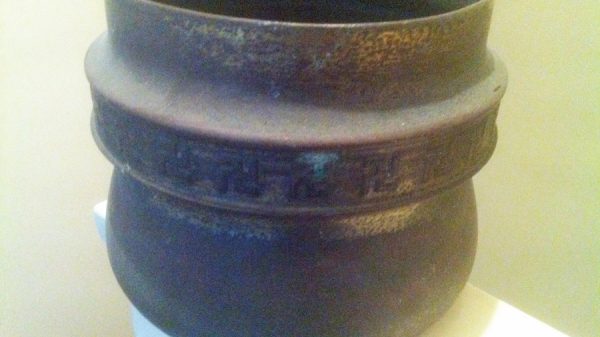Richmond Castle is one of the best preserved 11th century buildings in England, and somewhere I have enjoyed visiting and writing about in the past. The market town of Richmond is a vibrant place, combining interesting shops, scenic views and of course history – with the castle still in the midst towering above the River Swale.
Richmond Castle is run by English Heritage, who have recently commissioned a new project to further investigate the history of the site, and hopefully uncover more stories that it may be hiding underground!
“Richmond Castle is a fantastic site with a varied and interesting history,” explains William Wyeth, English Heritage Properties Historian. “We are working with Wessex Archaeology to understand more about how the structure evolved and tell some of the more human stories of the castle. The aim of the project is to inform our interpretation of the site so that we can bring it to life for visitors.”
The initial works undertaken by Wessex Archaeology’s Geoservices team have included a non-intrusive geophysical survey of the large enclosure in the middle of the castle walls, called the ‘great court’, covering an area of 0.75 ha. The team used ground-penetrating radar (GPR) to characterise the features underneath the ground and understand what the area may have been used for over time.
After scanning the area using GPR, the Wessex Archaeology team assessed the data and identified several structures of interest.
“We picked up a number of features which suggest that there could be some interesting archaeology buried in this area,” says Alexander Schmidt, Geophysicist at Wessex Archaeology, who undertook the survey. “Running across the western side, the distinctive pattern of the mid-19th century militia married quarters were easily identified, built to house married staff sergeants and their families based in Richmond. (These are some of the earliest purpose-built examples in the UK.) In the eastern area of the great court, we found what are likely to be earlier phases of structures, which run adjacent to existing foundations. There are also several interesting points picked up within areas of existing archaeological interest, and we think these could be buried objects or building debris.
“We’re hoping that further investigation will give us a clearer picture of the archaeology of this site, which is a rare example of an early Norman enclosure castle and is notable for the excellent state of preservation of its 12th century keep and survival of its 11th century features.”
The castle occupies a naturally defensive position on a cliff above the River Swale, and includes the standing remains of the castle, its three courts and castle bank, and curtain wall. The earliest form of the castle was that of a massive curtain wall around two sides of a triangular great court.
Richmond Castle’s role was tied with that of a substantial, kingdom-spanning estate, the Honour of Richmond of which it was the administrative centre, and which underwent numerous changes of lordship during the Middle Ages and after. It owes its excellent state of preservation to being overlooked by the Wars of the Roses and the Civil War. The castle was repaired during the 15th and 16th century, but by the 17th and 18th century the castle was largely a ruin. During World War One, the site became a headquarters for the Non-Combant Corps and was used to detain absolutist conscientious objectors including ‘The Richmond 16′.
English Heritage’s work at Richmond Castle continues, and it will be something I will keep my eye on to see what they find! The new interpretation scheme including a revamped site museum opens to visitors next month.







